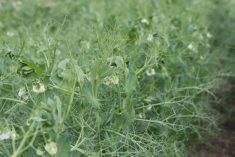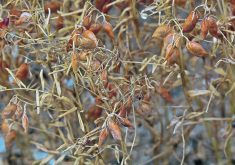Market nervous about quality as heavy rain threatens Australia’s crop and Canadian production remains up in the air
Analysts differ on the outlook for red lentil prices.
FarmLink Marketing Solutions lead analyst Neil Townsend is bullish red lentils, primarily due to heavy rainfall in eastern Australia.
Australia is Canada’s main competitor in export markets. Heavy rain and flash flooding have been occurring in northern Victoria and southern New South Wales, where about half of the country’s lentils are grown.
“That is making the market nervous about quality,” said Townsend.
Reuters is reporting that the rains have already likely had an impact on wheat crop quality in eastern Australia. The crop is scheduled to be harvested at the end of the year.
Read Also

Working groups established to address challenges in the containerized and bulk movement of commodities
CN is working with the pulse and special crops sector on resolving challenges in shipping those commodities.
“Nearly half of the wheat crop, or around six to seven million tonnes, is at risk of quality downgrades in New South Wales,” Ole Houe, director of advisory services at agriculture brokerage IKON Commodities, told Reuters.
“We could end up having large volumes of feed quality wheat on the east coast.”
Townsend said there have been weather problems in other key lentil markets as well, such as extreme flooding in Pakistan that may have depleted food stocks.
India is sending out clear signals that its rabi and kharif crops have both been affected by poor weather.
“We do see upside for the market,” said Townsend.
Marlene Boersch, managing partner of Mercantile Consulting Venture, said there is a lot of uncertainty about Canada’s lentil production.
Saskatchewan Agriculture is using a yield estimate of 1,174 pounds per acre, while Statistics Canada pegged the average national yield at 1,438 lb. per acre in its September report.
Mercantile is using a yield of 1,300 lb. per acre, resulting in total production of 2.6 million tonnes, an estimated 72 percent of which is red lentils.
“Final changes in yield will be important to the green lentil side as green lentils are tight, but especially when combined with the ample Australian production, red lentils look to be well supplied,” Boersch said in Saskatchewan Pulse Growers’ October issue of In The Market.
The Australian government is forecasting a record 924,000 tonnes of lentil production, which would be well above the previous five-year average of 628,000 tonnes.
She said international buyers are not well covered and will be making purchases over the next month or so. However, container availability is still a big problem, which will impact pulse and special crops movement.
“Our advice to buyers is to work with much longer timelines than in the past,” said Boersch.
Some lentils have been moving in bulk this fall to markets in India, Turkey and the United Arab Emirates. That has supported a good start to the shipping season.
“It is interesting to note in this context that India is currently buying some green lentils to compensate for a smaller pigeon pea crop, further supporting the green lentil market,” she said.
India is expected to buy one million tonnes of red and green lentils from all origins this year. It purchased about the same amount in 2020, with Canada providing two-thirds of that total.
Australia’s red lentil crop is expected to provide stiff competition to Canada in November and December.
“Any reds not yet sold before that time will likely have to wait for the next sales window in February and March 2023,” said Boersch.
















